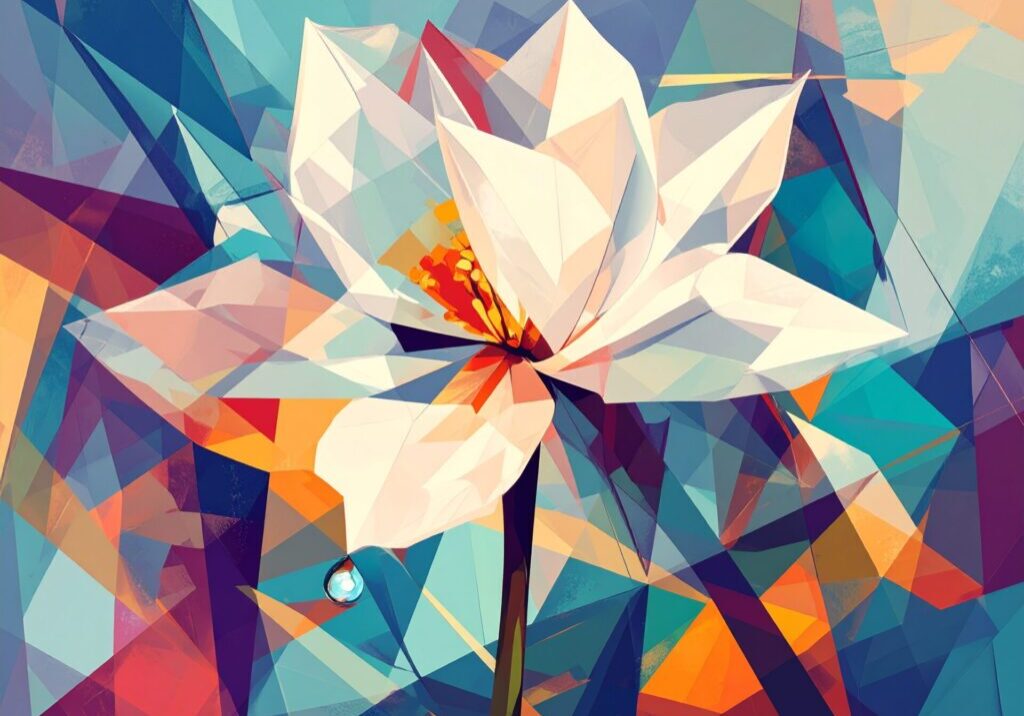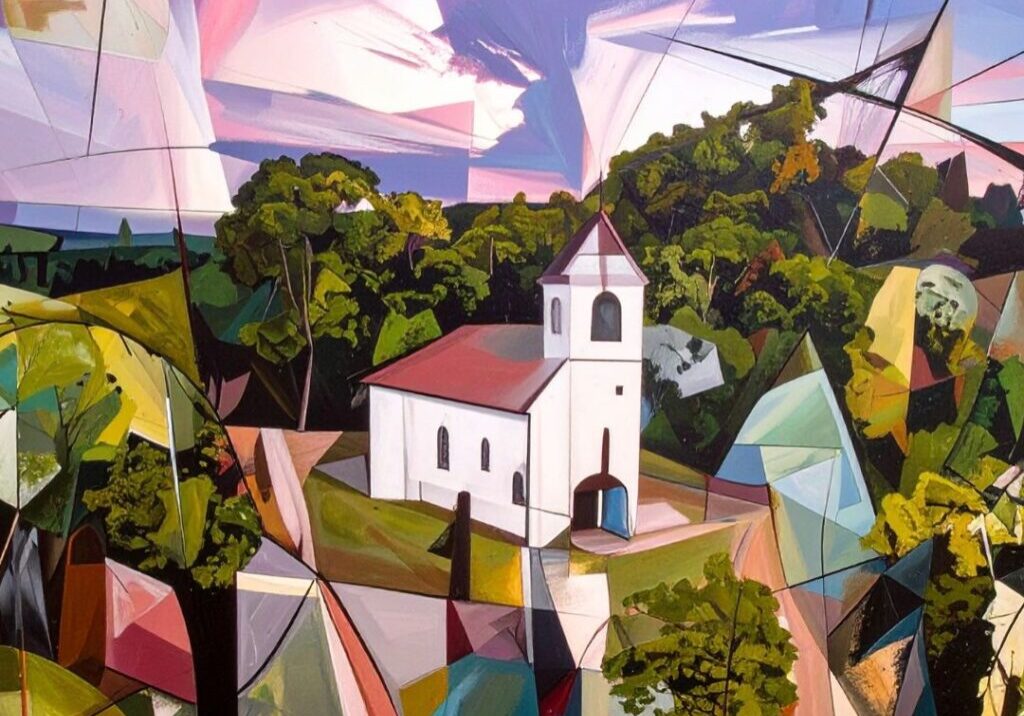Boundaries, Bark, And Incarnation
The boundaries are gone. We may not have all realized it yet, but they’ve dissolved right in front of us. Certainly, many of us—maybe most of us—are playing as if the old lines were still there, fighting to honor our past divisions. But the truth is, they’re gone. As Brie Stoner pointed out in her last blog post, for those of us who grew up with the internet—that is, who grew up watching the internet grow up—the old lines just don’t make sense anymore.
We talk to friends in real-time on the other side of the planet. Through social media, we’re made constantly aware of the needs, the struggles, the pain of the entire world—not just human pain, but animal and ecological as well. Thanks to increased travel and immigration, we bump into a multitude of cultures, religions, and spiritualties on a daily basis. And any aspect of diversity that we can’t experience directly in our local communities is nevertheless right at our fingertips through Youtube videos and Google searches.
The old lines—national, ethnic, religious—are no longer true to our experience. We’re in an age of what Linda Groff called “boundary meltdown.”[i] We’re becoming global human beings who understand that we are not separate from one another or from the earth—who understand that there are no lines. It will take time for us to catch up with this new reality, but it’s already here—whether we like it or not.
Throw into this great convergence the dynamism of an evolutionary worldview, and the moment we find ourselves in cries out for a new story, a new (re-)orienting mythos. Can we find a narrative big enough to hold everything and all of us? And where do our religions—where does Christianity—fit in all of this? There is, of course, Jesus’ teaching that new wine requires new wineskins—lest the old skins burst and the wine be spilled. Are our religions old wineskins?
It’s certainly possible. But I suspect that another metaphor may be more apt: tree growth. As a tree expands year by year to express new and larger life, the old, constricting layer of bark—once the tree’s protection at an earlier stage of development—is pushed off and a new layer emerges (until it, too, becomes too confining). What if Christianity—and our other great traditions as well—are not old wineskins, but trees working to push off old layers of constricting bark? What if they don’t need to be traded in for brand new religions, but only to shuck off those elements that promote tribalism, superiority complexes, and theological exclusivity?
My suspicion, explored in an earlier blog post for the Omega Center, is that Christianity—or better, Jesus—was always ahead of the curve in this respect. Beginning as an earthy, incarnational path of spiritual- and world-transformation, for two-thousand years we’ve read the Jesus movement through our own limited roadmaps and bounded (mis)perception—largely thanks to our 4th century wedding to the forces of Empire. But what if the Christ-event, unleashed in the life of Jesus and his original followers, was actually an early stirring of the global, integrative consciousness we’re just now beginning to catch up with as a species? What if Jesus was showing us how to transform our consciousness and step beyond those illusory boundaries?
This past century, the late Roman Catholic priest Raimon Panikkar coined a helpful word: christophany. Like “theophany”—a manifestation of God (theos)—christophany literally means “a manifestation of Christ.” Panikkar uplifted christophany as an alternative to “christology,” the traditional term for our theology (thoughts, concepts, beliefs) about Jesus. Instead, he wanted to call us into the mystical experience of Jesus. Not “How do we think properly about Jesus?” but “How do experience reality like Jesus?”
Panikkar said that, for Christians, Jesus can be seen as “the symbol of the whole of reality.”[ii] In other words, the mystery disclosed in Jesus—traditionally defined as the union of the “human” and the “Divine”—that mystery is, in fact, the mystery at the heart of the entire cosmos, and of every being. “A non-reductive Christian vision,” Panikkar wrote, “should be able to assert that every being is a christophany, a manifestation of the christic adventure of the whole of reality on its way to the infinite mystery.”[iii] Jesus, then, shows us what we truly are—and what the universe is.
The traditional doctrine of “the Incarnation”—God embodied in the human and material—is not something that happened only in Jesus. Rather, it’s something revealed in Jesus, happening all around us, awaiting our awakening to its reality. Seen in this light, we can begin to speak of a cosmic Incarnation, of God poured out into the entire web of life, gradually becoming conscious of Godself through our own awakening hearts. Teilhard de Chardin celebrated this universal and cosmic dimension of the Incarnation; he wrote: “We are all of us together carried in the one world-womb; yet each of us is our own little microcosm in which the Incarnation is wrought…” And again, “The presence of the Incarnate Word penetrates like a universal element. It shines at the heart of all things.” [iv]
Barbara Brown Taylor, an Episcopal priest, writes about her understanding of the Incarnation: “Relatively late in life, I have decided that incarnation is less a doctrine than a practice, which Jesus did not come to do once and for all but to show any who were willing how God’s word might become flesh in their lives too.”[v] What if the new story, the emerging Christian framework, is not so much about “believing” the right things as it is experiencing in the right way?
In the Gospel of John, Jesus prays to the Father, the Source, “May they all be one, as you and I are one” (John 17:21). In the Letter to Philippians, St. Paul admonishes the earliest Christians to “let the same mind be in you that was in Christ Jesus” (Phil. 2:5). Can we see these as invitations into the consciousness, the unitive experience, of Jesus? What if the new story we are being called to tell will emerge not from so much theoretical knowledge, but from our direct participation in the mind of Christ, our becoming christophany?
If this is the case, we don’t have to throw out the Christian story. Instead, we can see the entire life of Jesus—Incarnation, Crucifixion, Resurrection, Ascension, and the outpoured and indwelling Holy Spirit—as a sacrament of what God is always doing in, through, and as the universe. We can see our great Christian dogmas not as a series of strange things to be “believed in” but instead as invitations into universal and participatory mysteries: windows into how the Divine is embodied, dying, rising, and outpouring itself in the unfolding unity of the universe.
Evolutionary biologists, ecologists, quantum physicists, the internet itself—are all pointing to our unity with each other and all creation. But this unity, understood as information alone, as theory, can easily be rejected in favor of the old lines, boundaries, and stories we already know—stories that start from a place of separation. What’s needed is a taste, an experience, a heart-opening to this oneness that is Christ. It’s only from that that we’ll begin to not only tell a new story, but live it into being.
Karl Rahner once said that the Christian of the third millennium will either be a mystic or will not be at all. Christianity’s future must be experiential, contemplative, and evolutionary—a path of transformation that holds hands in joyful friendship with all other such paths of awakening, be they “religious” or “secular” (yet one more line of division that is rapidly disappearing!). This requires, however, that we turn not only to new cosmologies and healthier theologies, but toward spiritual practice. And this is exactly why I feel certain that our religions do have a future—because they hold the contemplative and devotional technologies that can best transform our hearts and minds.
We don’t need to lose our old stories and religions—only to reset them within a bigger story, freed of competition and conflict, rooted instead in cooperation and complementarity. The work at hand is one work, and it will require all of us. The boundaries are gone. God has poured Godself out into all creation, unfolding and awakening to and as the absolute unity of all that is. We are the instruments of that awakening. We are the new story.
NOTES:
[i] Wayne Teasdale. A Monk in the World: Cultivating a Spiritual Life. Novato, CA: New World Library, 2003, 174.
[ii] Raimon Panikkar. Christophany: The Fullness of Man. Maryknoll, NY: Orbis Books, 2004, p. 144.
[iii] Ibid., p. 146.
[iv]Blanche Gallagher. Meditations with Teilhard de Chardin. Santa Fe, NM: Bear & Company, 1988.
[v] Barbara Brown Taylor. Practicing Incarnation. Christian Century, April 2005.
 View print-friendly version
View print-friendly version
11 Comments
Related Posts

Mission for an Evolutionary Christianity
We are living through tumultuous times. Political polarization intensifies, violence against vulnerable populations escalates, and the foundational principles of human dignity face erosion. For many, the cognitive dissonance between professed…


The tree shredding her bark is, indeed, a much clearer image of our expanding consciousness. Each ring recognizes the soreness of the incarnations within the Cosmos. All is incarnation for God who is “truly hidden below” ( Thomas Merton)
As we shed this bark, it is also time to consider renaming this “Christ”. If we are considering all religion and spiritual practices, then we must be sensitive to the fact that ” Christ” is a word with much baggage. A loaded word. One made so over generations. A sacred cow. It must go! For us all to unite, and it is so very possible. It truly is. Words and phraseology will be most important. Christ could be Light, Source, Heat, Passion – the collect humanity created the first…we can also create the next